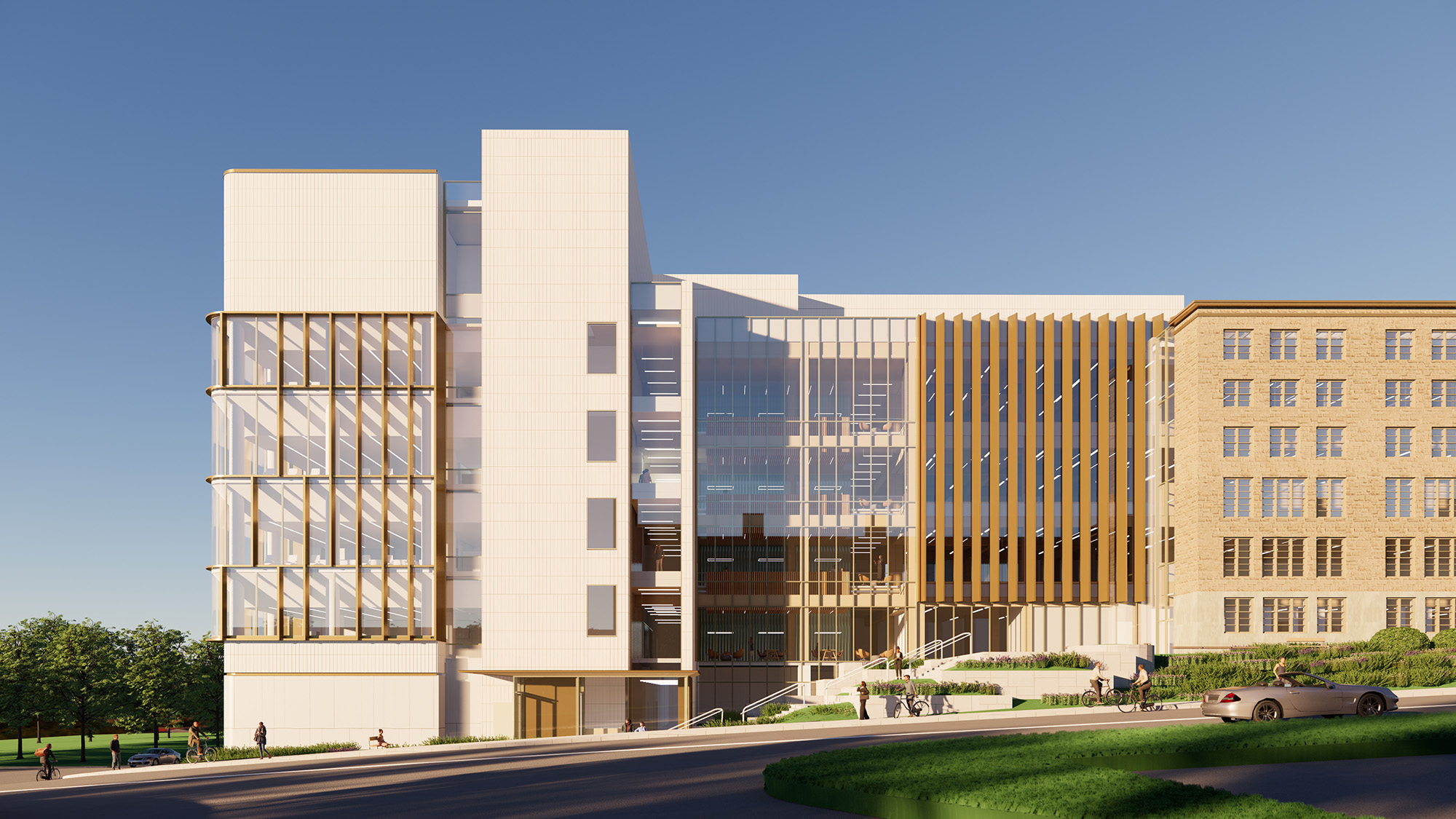Construction on the Atlantic Science Enterprise Centre (ASEC) has begun. Designed by Diamond Schmitt, in association with EXP, the new ASEC facility will provide federal scientists and partners with state-of-the-art space and equipment to collaborate on research opportunities, understand, protect and sustain Atlantic freshwater and coastal ecosystems in Canada. The design of the new building will reflect the heritage of the site, while establishing an open and inclusive environment that makes aquatic science more accessible.
The new ASEC will occupy the former home of the Collège Notre-Dame-d’Acadie which was originally founded and run by the Sisters of Notre-Dame-du-Sacré-Coeur. Opening in 1949, it was the first institution of higher education for Acadian women. The building was purchased by the Government of Canada in 1982 and reopened in 1985 as the Gulf Fisheries Centre.
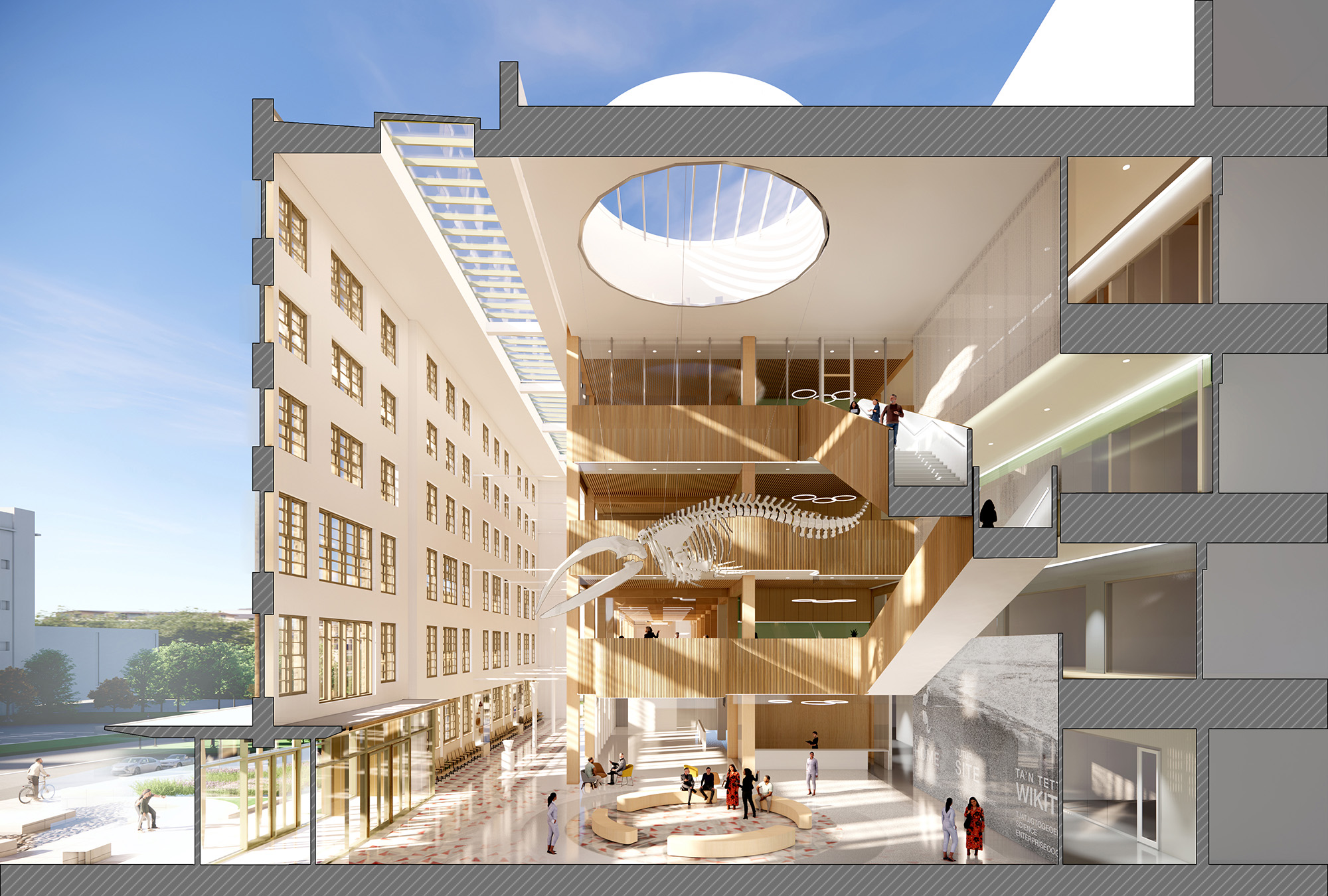
Through consultation with the Sisters, the prominence of the Collège’s main west heritage façade will be retained and serve as a principal element in Diamond Schmitt’s scheme. It will be centrally positioned and anchor the new facility, with the existing main entrance remaining as the principal entry point. The design will interpret the building’s historical pavilion character and strive to commemorate its origins by integrating and adapting key elements and spaces into the site’s now expanded program.
Atlantic Science Enterprise Centre (ASEC) design
Visitors and staff alike will be welcomed into the building through a full-height, four-storey Atrium and skylit Galleria which will serve as an exhibition space to commemorate the Sisters, provide a place for science on display, recognize Indigenous communities, and serve as a place for gathering. The Atrium and Galleria will act as the connective tissue between the building’s different programming components, while also establishing the importance of the public realm which includes a flexible multipurpose room, Mawiomi—an Indigenous Gathering space, informal and formal meeting spaces of varying sizes.
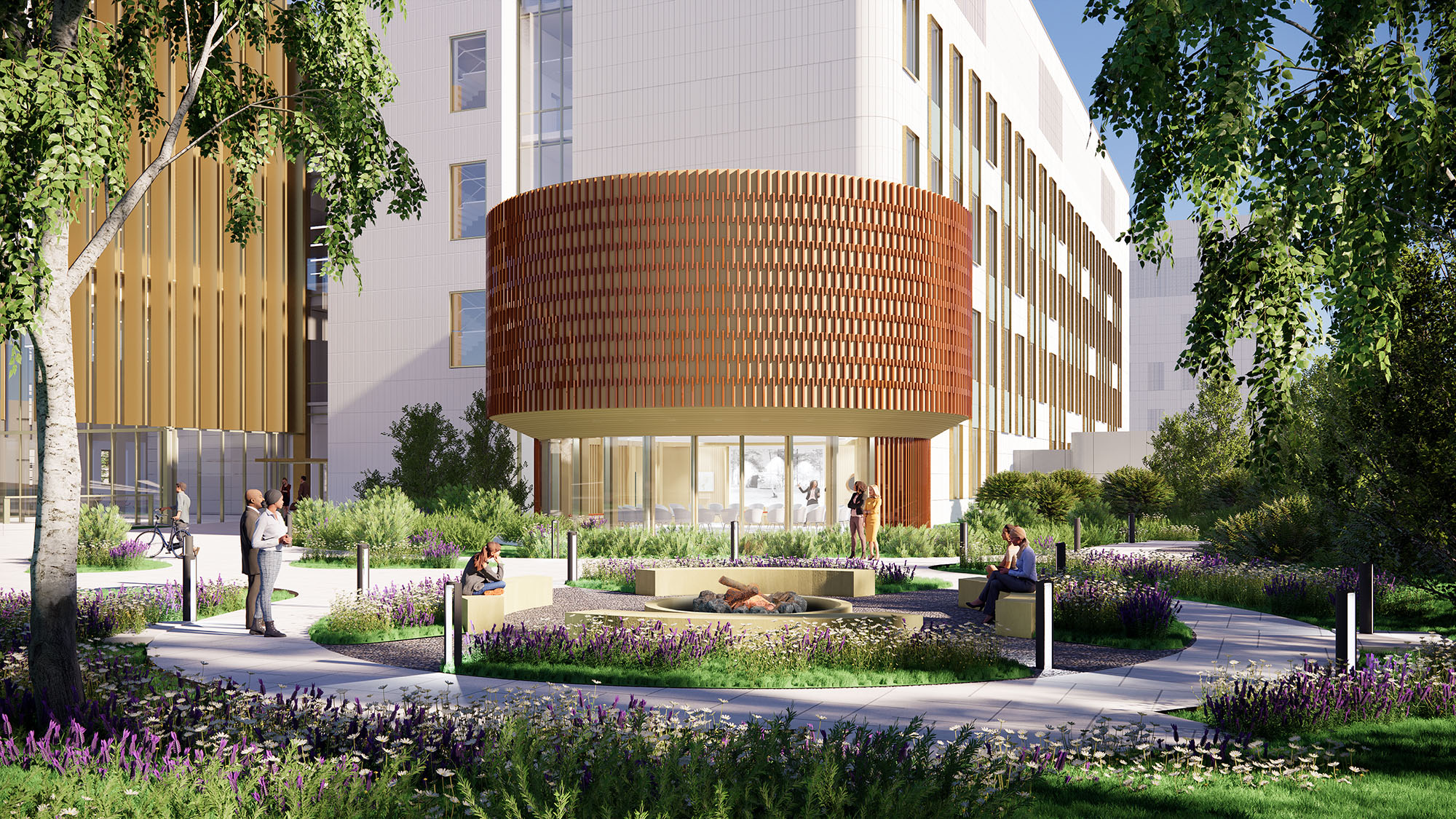
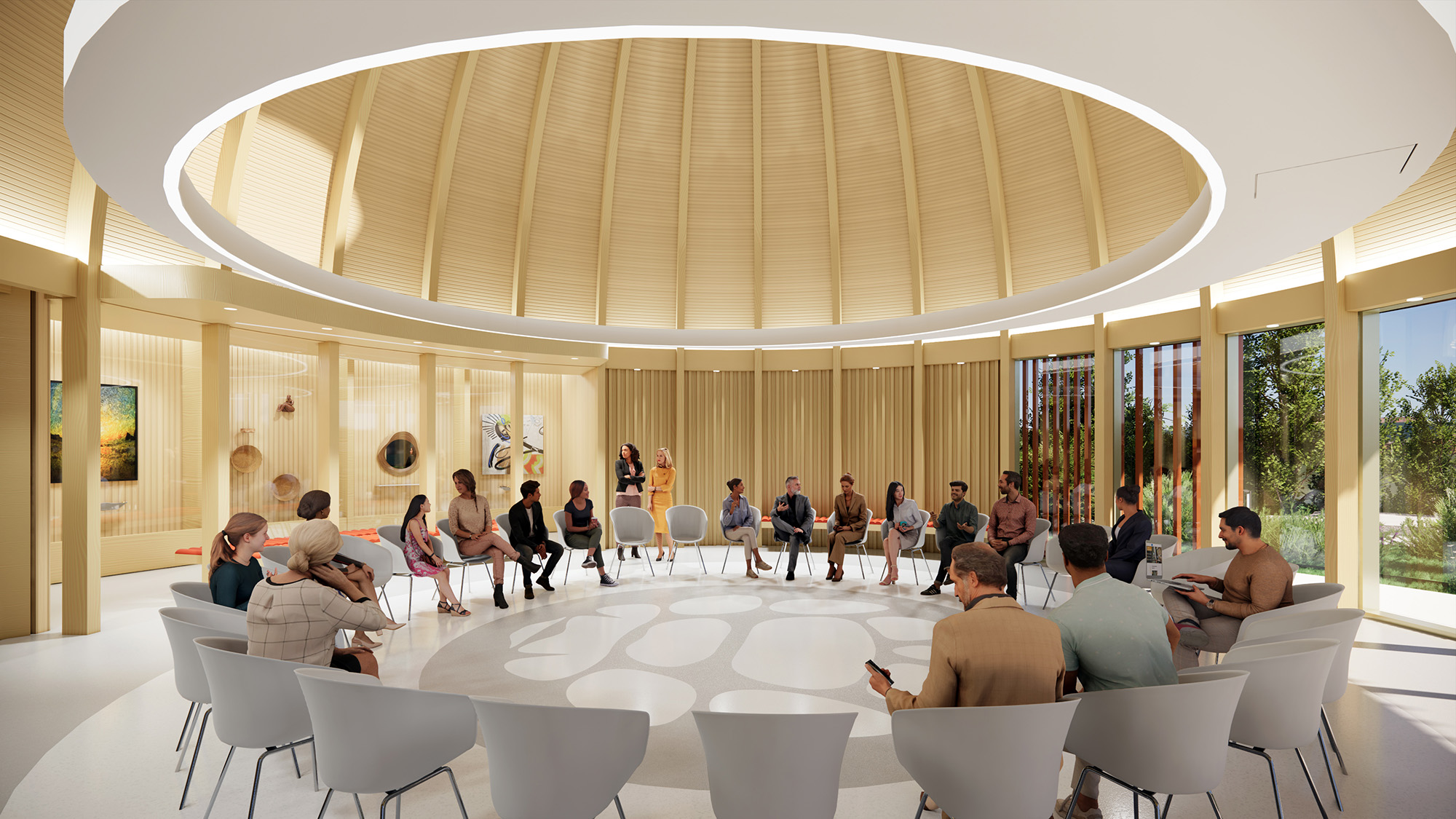
The net-zero carbon facility will allow the scientific work it will host to be advanced in an energy efficient and sustainable manner. Science areas will be organized around the creation of neighborhoods that group similar types of investigation together, encouraging the sharing of resources and equipment. This plan creates synergies between those groups, while also providing opportunities to foster cross-disciplinary collaborations. Laboratory space will be well lit with daylight and views, be universally accessible and adapt easily to the daily and future needs of occupants as their research evolves.
A key objective of the ASEC project is to establish new partnerships with First Nations and Indigenous groups through extensive engagement and visioning sessions. Led by Mi’kmaq Elder Noel Millea, Indigenous consultation will seek to create a welcoming space for Indigenous employees and visitors alike, and offer an inclusive environment where Indigenous ceremonies, storytelling, meetings, and cultural training can take place. Indigenous ways of knowing and being will inform the building’s design in a number of ways.
Large open spaces, flooded with natural light will offer places of gathering, spaces for learning and collaboration, and talking circles.The use of wood and glazing will provide a sense of warmth and belonging and open up the facility towards the outdoors, creating connections with the natural surroundings. Visual representations of Mi’kmaq, Wolastoqiyik and Passamaquoddy culture will be found throughout the new facility and its landscape.
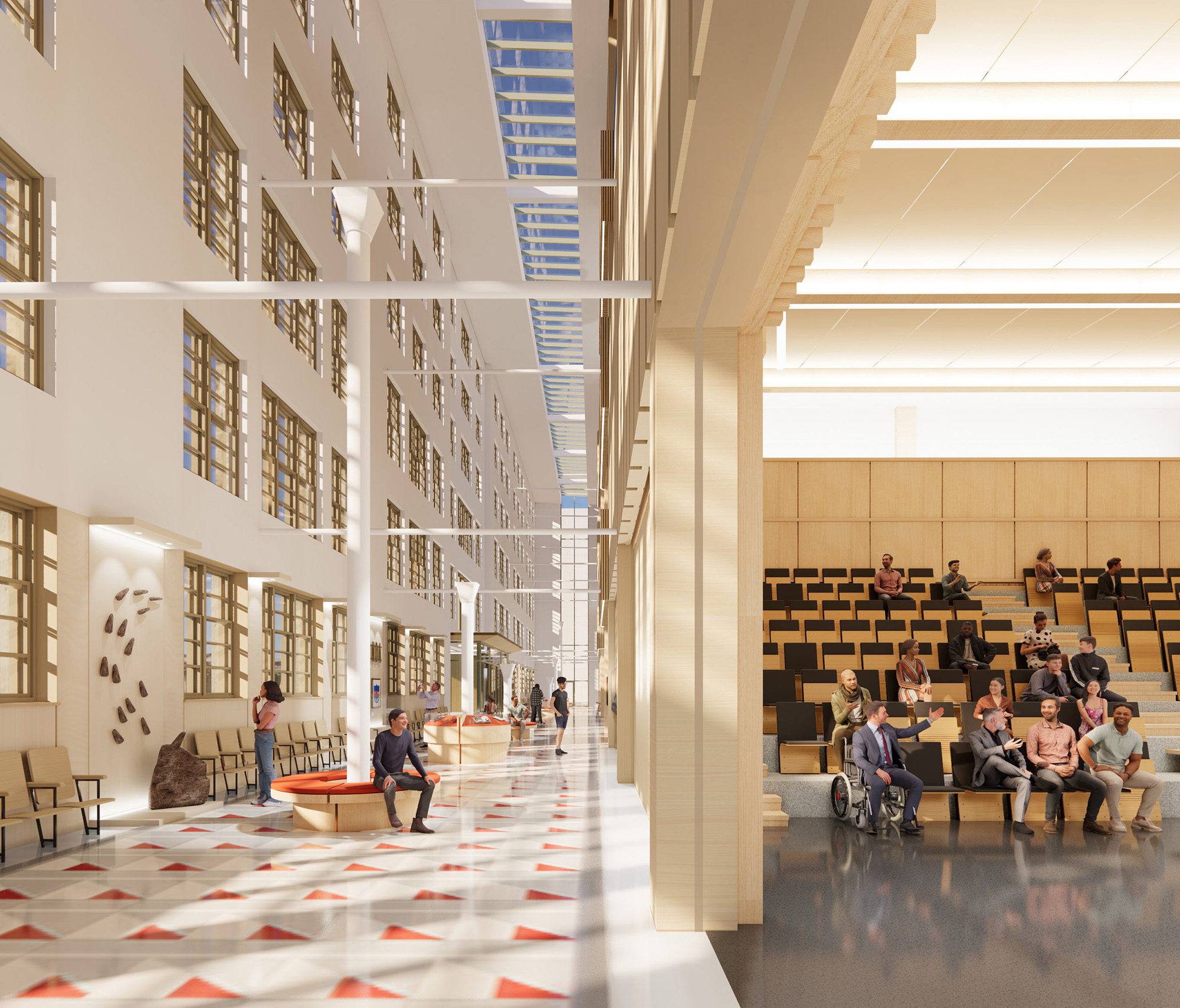
The goal of the overall planning and design approach of the new Atlantic Science Enterprise Center is to create a collaborative work environment not only within the laboratories, but with the Department of Fisheries and Oceans headquarters and open partner office areas. This extends into the social spaces where collaborative zones are clustered around the atrium, connecting the floors both physically and visually, and on all levels, bringing together the various partners sharing the facility.
The Atlantic Science Enterprise Centre is being built in three phases to allow for the continued use of the existing building during construction. The site preparation work is currently underway as part of the first phase. The construction of the new science wing to the north of the existing building will begin in 2024.
When it is fully occupied in 2031, the Atlantic Science Enterprise Centre will serve over 700 employees from four federal organizations, including Fisheries and Oceans Canada, Environment and Climate Change Canada, the Canadian Food Inspection Agency and the National Research Council Canada. The Canadian Space Agency will participate in ASEC as a virtual partner.
Related Stories
BIM and Information Technology | May 8, 2023
3 ways computational tools empower better decision-making
NBBJ explores three opportunities for the use of computational tools in urban planning projects.
Mass Timber | May 1, 2023
SOM designs mass timber climate solutions center on Governors Island, anchored by Stony Brook University
Governors Island in New York Harbor will be home to a new climate-solutions center called The New York Climate Exchange. Designed by Skidmore, Owings & Merrill (SOM), The Exchange will develop and deploy solutions to the global climate crisis while also acting as a regional hub for the green economy. New York’s Stony Brook University will serve as the center’s anchor institution.
University Buildings | Apr 24, 2023
Solving complicated research questions in interdisciplinary facilities
University and life science project owners should consider the value of more collaborative building methods, close collaboration with end users, and the benefits of partners who can leverage sector-specific knowledge to their advantage.
Laboratories | Mar 9, 2023
5 laboratory design choices that accelerate scientific discovery
Stephen Blair, director of CannonDesign's Science & Technology Practice, identifies five important design strategies to make the most out of our research laboratories.
University Buildings | Feb 9, 2023
3 ways building design can elevate bold thinking and entrepreneurial cultures
Mehrdad Yazdani of CannonDesign shares how the visionary design of a University of Utah building can be applied to other building types.
Giants 400 | Feb 9, 2023
New Giants 400 download: Get the complete at-a-glance 2022 Giants 400 rankings in Excel
See how your architecture, engineering, or construction firm stacks up against the nation's AEC Giants. For more than 45 years, the editors of Building Design+Construction have surveyed the largest AEC firms in the U.S./Canada to create the annual Giants 400 report. This year, a record 519 firms participated in the Giants 400 report. The final report includes 137 rankings across 25 building sectors and specialty categories.
University Buildings | Feb 7, 2023
Kansas City University's Center for Medical Education Innovation can adapt to changes in medical curriculum
The Center for Medical Education Innovation (CMEI) at Kansas City University was designed to adapt to changes in medical curriculum and pedagogy. The project program supported the mission of training leaders in osteopathic medicine with a state-of-the-art facility that leverages active-learning and simulation-based training.
Mass Timber | Jan 30, 2023
Net-positive, mass timber building will promote research on planetary well-being in Barcelona
ZGF Architects, along with Barcelona-based firms MIRAG and Double Twist, have designed a net-positive, mass timber center for research on planetary well-being. Located in Barcelona, the Mercat del Peix Research Center will bring together global experts in the experimental sciences, social sciences, and humanities to address challenges related to the future of the planet.
Adaptive Reuse | Dec 21, 2022
University of Pittsburgh reinvents century-old Model-T building as a life sciences research facility
After opening earlier this year, The Assembly recently achieved LEED Gold certification, aligning with the school’s and community’s larger sustainability efforts.
Data Centers | Nov 28, 2022
Data centers are a hot market—don't waste the heat!
SmithGroup's Brian Rener shares a few ways to integrate data centers in mixed-use sites, utilizing waste heat to optimize the energy demands of the buildings.


